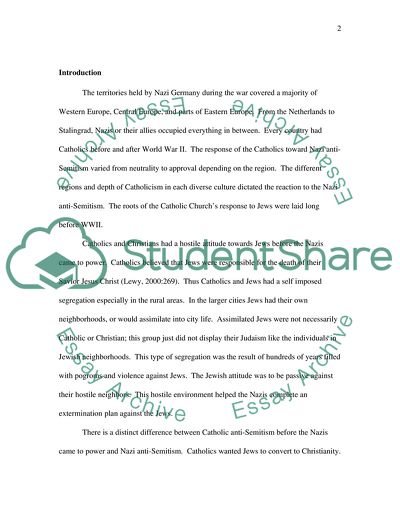Cite this document
(Catholic Churchs Response to Nazi Anti-semitism Research Paper, n.d.)
Catholic Churchs Response to Nazi Anti-semitism Research Paper. Retrieved from https://studentshare.org/religion-and-theology/1726368-recount-the-catholic-churchs-responses-to-nazi-anti-semitism
Catholic Churchs Response to Nazi Anti-semitism Research Paper. Retrieved from https://studentshare.org/religion-and-theology/1726368-recount-the-catholic-churchs-responses-to-nazi-anti-semitism
(Catholic Churchs Response to Nazi Anti-Semitism Research Paper)
Catholic Churchs Response to Nazi Anti-Semitism Research Paper. https://studentshare.org/religion-and-theology/1726368-recount-the-catholic-churchs-responses-to-nazi-anti-semitism.
Catholic Churchs Response to Nazi Anti-Semitism Research Paper. https://studentshare.org/religion-and-theology/1726368-recount-the-catholic-churchs-responses-to-nazi-anti-semitism.
“Catholic Churchs Response to Nazi Anti-Semitism Research Paper”, n.d. https://studentshare.org/religion-and-theology/1726368-recount-the-catholic-churchs-responses-to-nazi-anti-semitism.


